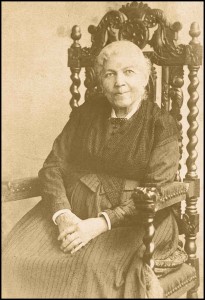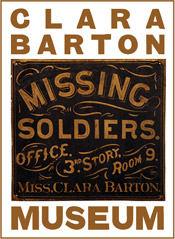Harriet Jacobs
I was born a slave; but I never knew it until six years of my happy childhood passed away…I was so fondly shielded that I never dreamed I was a piece of merchandise.[1]

Harriet Jacobs
Harriet Jacobs was born a slave in Edenton, North Carolina in 1813. In 1825 she was sold to the Norcom plantation where she quickly became the target of her master’s sexual victimization, “If God has bestowed beauty upon her [a female slave], it will prove her greatest curse,” Jacobs wrote in 1861, “That which commands admiration in a white woman only hastens degradation of the female slave”.[2] After giving birth to two children fathered by a white lawyer and exhausting every option to negotiate her freedom, in 1835 Jacobs ran away from the Norcum plantation. She sought refuge in the garret of her grandmother’s house, a free woman of color in Edenton, for seven years. In 1842 Jacobs finally fled to the North.
After a painstaking struggle, she brought her children to live with her in Boston where she worked as a nursemaid. In the two decades preceding the outbreak of the American Civil War, Jacobs moved in prominent abolitionist circles and forged a particularly close relationship with the iconic abolitionist and suffragist Amy Post. Post encouraged Jacobs to make her story public, and in 1861 under the editorship of leading social reformer Lydia Maria Child, Jacobs published Incidents in the Life of A Slave Girl Written by Herself under the pseudonym Lydia Brent. Appealing to a white northern middle-class female audience, her narrative portrayed experiences of sexual abuse and motherhood as inherent realities in the lives of female slaves. “She [a slave mother] sits on her cold cabin floor, watching the children who may all be torn from her the next morning; and often does she wish that they may die before the day dawns.”[3]
With the outbreak of the Civil War, Jacobs devoted herself to alleviating the plight of former slaves who were refugees from the war.[4] In 1862 Jacobs was asked by William Lloyd Garrison, editor of The Liberator, to report on the conditions facing black refugees in the nation’s capital. Jacobs reported on September 5, 1862 that the conditions were vastly subpar; the old schoolhouse in Alexandria, the headquarters for women refugees, was “the most wretched of all the places. Any one who can find an apology for slavery should visit this place, and learn its curse.” She also visited Birch’s slave pen, “This place forms a singular contrast with what it was two years ago. The habitable part of the building is filled with contrabands; the old jail is filled with secesh prisoners—all within speaking distance of each other.”[5]
Jacobs worked tirelessly to better the health care and educational opportunities for former slaves. In January 1864 she opened The Jacobs Free School in Alexandria with her daughter Louisa. Until her death in 1897, Jacobs continued to champion the causes of freed slaves during and after the war, highlighting the long struggle for freedom and the enduring shadow of slavery throughout the second half of the nineteenth century.
Further Reading
- Jean Fagan Yellin, Harriet Jacobs: A Life (New York: Basic Civitas Books, 2004)
- Harriet Jacobs, The Harriet Jacobs Family Papers, eds. Jean Fagan Yellin, Joseph M. Thomas,
- Kate Culkin and Scott Korb (Chapel Hill: University of North Carolina Press, 2008)
- Harriet Jacobs, Incidents in the Life of A Slave Girl. Written by Herself (Boston: Thayer & Eldridge, 1861) Available online at: http://docsouth.unc.edu/fpn/jacobs/jacobs.html
About the Author
Kristen Brill is a lecturer in American History at Keele University (UK).
[1] Harriet Jacobs, Incidents in the Life of A Slave Girl. Written by Herself (Boston: Thayer & Eldridge, 1861) , 11-12.
[2] Jacobs, Incidents, 46.
[3] Jacobs, Incidents, 26.
[4] This population is also often referred to as “Contrabands” or the “Self-Liberated.”
[5] Harriet Jacobs, “Life Among the Contrabands”, The Liberator, September 5, 1862. Available at: http://docsouth.unc.edu/fpn/jacobs/support5.html
Tags: African American History, Harriet Jacobs, Women's History Posted in: Uncategorized
